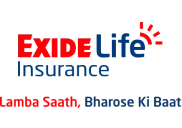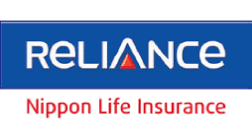
Life insurance policies are multi-faceted. They not only cover you against premature death, savings-oriented plans create wealth too. There are other benefit features in your life insurance plan too which give you liquidity. Unit-linked plans provide you with the facility of partial withdrawals so that you can access your money whenever you want. Traditional plans, on the other hand, provide you with policy loans. These loans give you funds when you need them the most. Though loans are a good way to have access to your funds, some things should be remembered before you take a loan. Do you know what these things are?
Things to Keep in Mind if You Want a Loan on Your Life Insurance Policy
When is the loan available?
You cannot avail of a loan whenever you want to. Only if your life insurance plan acquires a surrender value can you avail the loan. Your plan acquires a surrender value only after you pay premiums for a specified number of years. Usually, premiums for the first two or three years are required before the plan acquires a surrender value. In the case of policies where the premium paying term is 10 years or less, the first two years’ premiums are required. If the premium paying term is more than 10 years, the first three years’ premiums are required. So, check the policy to find out when you can avail of the loan.
Maximum quantum of loan
There is a limit up to which you can avail of a loan. The limit is defined as a percentage of your policy’s surrender value which is available when you apply for the loan. Different plans have different maximum limits of loans. Usually, you get up to 60% to 90% of the surrender value as a loan. You should check the maximum quantum available and whether the quantum matches your requirement or not.
Interest applicable on loan
The loan is a credit that you take from the insurance company. As such, you have to pay an interest rate on the loan. Interest is calculated on an annual basis on the amount of loan which you avail. The rate is determined by the insurance company based on the market rates. Sometimes, you might find the rate to be 2% more than the existing bank rate. So, always keep the applicable interest rate in mind before you apply for the loan to ensure that the repayment would be affordable.
Loan in case of paid-up policies
Paid-up policies are those in which you have stopped paying the premiums. If the minimum premiums have been paid, the policy continues on a reduced sum assured without you having to pay future premiums. In case of paid-up policies, the surrender value is limited as premiums are discontinued. When you apply for a loan, you get a very limited amount. Moreover, if you do not repay the loan and the outstanding liability exceeds the surrender value, the policy is foreclosed. So, try and avoid taking a loan with a paid-up policy. You might lose your coverage
Foreclosure in life insurance
As mentioned earlier, foreclosure applies when you take a loan in a paid-up policy and the loan with interest exceeds the surrender value. The surrender value is the maximum value that is payable to you in between the terms of the plan. If the outstanding liability exceeds this value, the company is forced to foreclose the policy. Foreclosure is an early termination of your policy. The company informs you before foreclosing the policy and requests you to pay the loan to avoid foreclosure. If you do not repay the loan or respond to the company’s notice of foreclosure, the policy is foreclosed. Any remaining surrender value (after deducting the outstanding loan) is refunded to you on foreclosure.
So, be careful when you take a loan. Take note of these points before you take a loan so that you don’t face any surprises later on.
Read more:
Found this post informational?
Browse Turtlemint Blogs to read interesting posts related to Health Insurance, Car Insurance, Bike Insurance, and Life Insurance. You can visit Turtlemint to Buy Insurance Online.






























